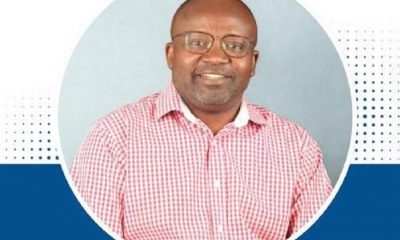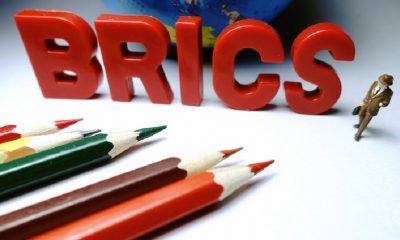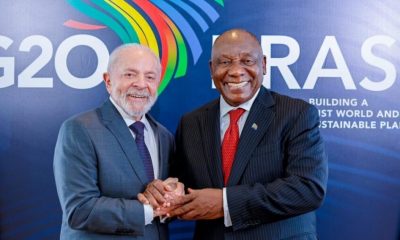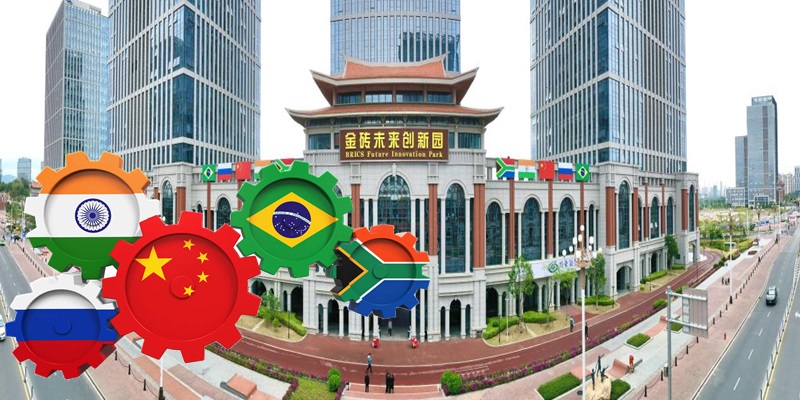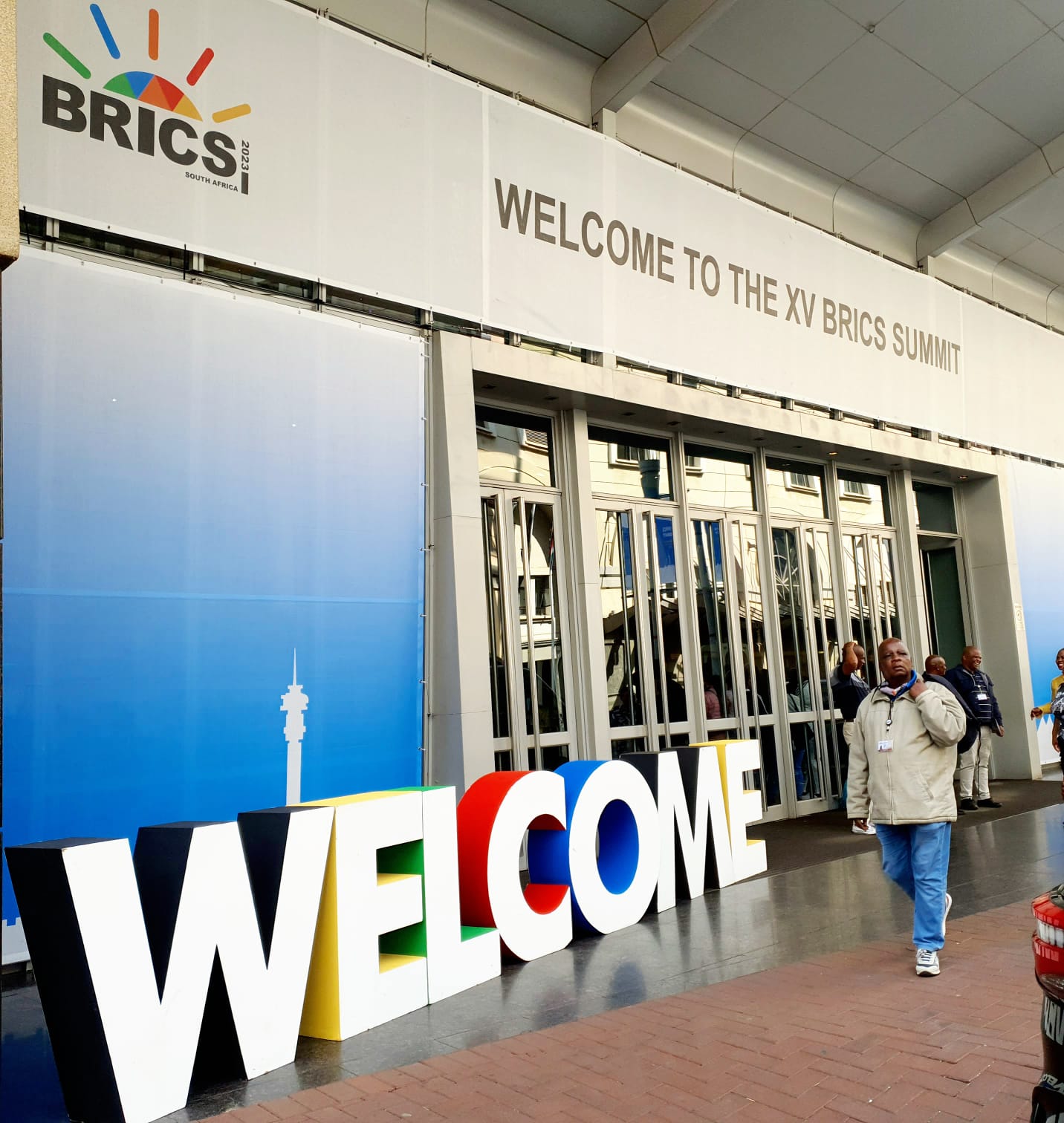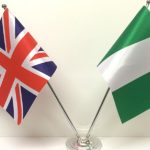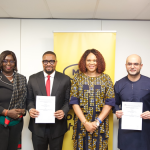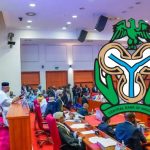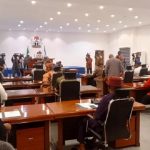World
BRICS+ Heading Towards Strategic Enlargement and Consolidating Multipolar World
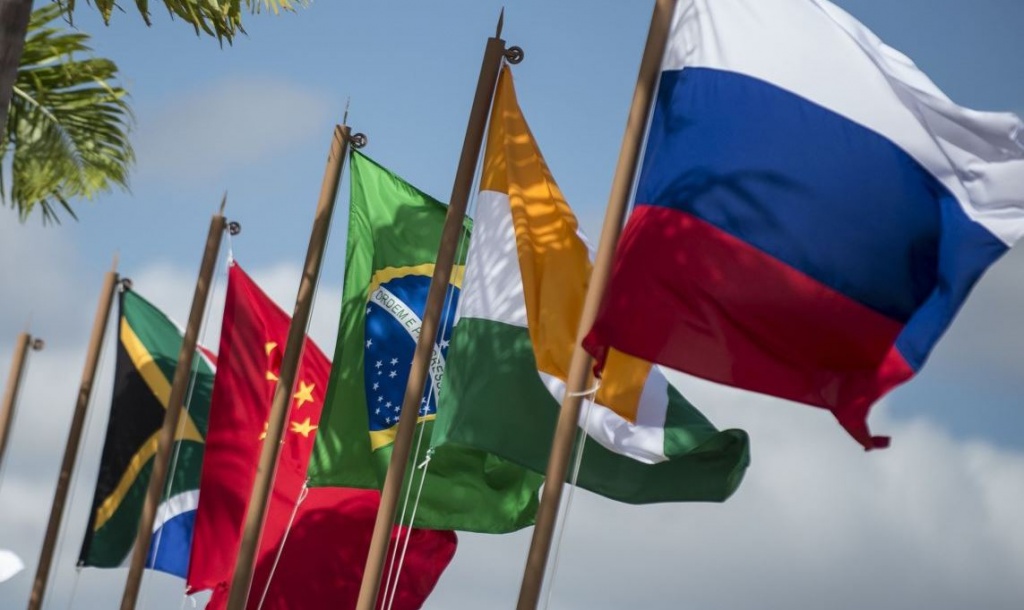
By Kestér Kenn Klomegâh
The question yet stands: what potential countries with high aspirations are gearing up to join BRICS+, an informal association of developing economies, during the forthcoming summit this October 22-24? In the context of preparations for the BRICS+ summit, a number of significant issues, including the expansion of the association, were reviewed and considered at the sidelines of the 79th session of the United Nations General Assembly in New York. Russian Foreign Minister Sergey Lavrov reiterated “the creation of a category of partner states” for the current association of BRICS+. Lavrov had already indicated the “suspension” of membership into BRICS+ and further emphasized that “the ministers reviewed the efforts to coordinate the modalities of the new category, BRICS partner countries” as far back in June 2024 during the BRICS Foreign Ministers Council in Russia’s Nizhny Novgorod.
In late September in New York, Lavrov told a news conference following his participation in the high-level week of the 79th session of the UN General Assembly that BRICS+ considered further expansion inappropriate for now, the current BRICS member countries now considered it not feasible to admit new members, but countries expressing readiness would only become supporting partners and would maintain permanent contacts. These partner members could use BRICS+ to pursue the common goals of fighting United States dominance and Western hegemony. BRICS is also steadily working towards creating a multipolar world.
“As for the prospects for BRICS expansion, at this stage, all affiliated countries consider it reasonable not to make new decisions for the time being and to adapt the organization, an association of like-minded members. There were five of us, now there are ten. Of course, this requires some kind of habituation and smooth entry of new members into the work in line with the traditions that the quintet has developed over the years,” Lavrov said.
On the other hand, the transition towards a new economic architecture, characterized by de-dollarization and diversification of global financial frameworks, presents immense opportunities and challenges for the Global South. Russia’s engagements with mostly common geopolitical like-minded countries in Asia, Africa and Latin America regions underscore the strategic importance of the future development of BRICS+.
Meanwhile, BRICS+ rising against United States hegemony and dominance, ultimately helps create the situation or conditions for China to emerge as the global economic power. The ultimate result – BRICS+ is rather driving China, with an estimated population of 1.5 billion, to establish a global presence, Russia has been cooperating within the external economic parameters, especially with China and India.
Under Russia’s BRICS presidency which began in January 2024, Ethiopia, Egypt, Iran, Saudi Arabia and the United Arab Emirates became the second wave of the newest members to join BRICS. South Africa ascended in 2011 under China’s initiative. In 2015, BRICS established the New Development Bank (NDB), the only financial instrument to compete with other multilateral institutions such as the International Monetary Bank and the World Bank. While these operate worldwide, the NDB has limited scope of operations over the past decade. Nevertheless, NDB has made significant headway, at least, in consolidating its position and has also taken a few steps in raising the possibility of forging sustainable economic cooperation and collaborating on investment partnerships among member states. According to media reports, NDB primarily intended to pursue a flexible financial framework to create a fairer, more equitable system, in contrast to IMF and the World Bank. By advocating for these essential reforms, NDB portrays itself as the main instrument for reshaping the financial landscape for the Global South.
As often emphasized, BRICS+ functions on the basis of consensus. The consensus principle primarily aims at finding agreements that reflect the mutual accord of all participants. BRICS+ is an informal association of emerging economies based on a respectful attitude towards each other and on mutual consideration to promote collaboration based on a balance of interests and strictly adhering to the principle of the sovereign equality of states and non-interference in each other’s internal affairs. Moreover, its transforming structure remains an emerging force for a new global architecture.
In these previous years, BRICS+ has been emerging as a key player in this world and has the potential to drive significant economic growth and development but BRICS+ and the Global South collaboration face the challenges of diversity in politics, economy and culture. This is evidently noticeable in the dynamism of tackling complex issues such as economic development, trade, climate change, and global governance. The degree of variations significantly in terms of their level of economic development and political influence could complicate efforts to create a cohesive alliance, according to experts’ interpretations.
Leaders will decide on BRICS membership expansion on the basis of full consultation and consensus. The following countries have either expressed interest in joining BRICS or have already applied for membership:
(i) AFRICA
Algeria: In terms of market size, Algeria has the tenth-largest proven natural gas reserves globally, is the world’s sixth-largest gas exporter, and has the world’s third-largest untapped shale gas resources.
According to reports, Africa States have submitted applications: Angola, Burkina Faso, Cameroon, Central African Republic, Congo, DR Congo, Ghana, Kenya, Libya, Mali Republic and Niger Republic.
Nigeria: Nigeria’s Foreign Minister Yusuf Tuggar has announced that the country intends to become a member of the BRICS group of nations within the next two years. Nigeria has a GDP of $448 billion, a population of 213 million and a GDP per capita of $2,500. It has the world’s 9th largest gas reserves and significant oil reserves.
Senegal: It is a medium-capacity gold mining and energy player, with reserves in gold, oil, and gas. The energy industry is at a growth stage as reserves have only recently been found. The energy-hungry BRICS nations will be keen to secure their supplies.
Sudan: Sudan’s top five export markets are 100% BRICS – China, Russia, Saudi Arabia, India, and the UAE. Sudan also has regional clout. It is Africa’s third-largest country by area and is a member of the League of Arab States (LAS). Should Sudan join the BRICS it would give the group complete control of the Red Sea supply routes
East Africa: South Sudan, Tanzania, Tunisia, Uganda and Zimbabwe.
(ii) AMERICAS
Bolivia: Asset-rich but relatively poor, Bolivia has the fastest GDP growth rate in Latin America
There are also Chile, Colombia and Costa Rica.
Cuba: Cuba’s sanctions defiance has long made it a favourite of China and Russia when wanting to annoy the United States. It also has significant agreements with China and Russia, is a member of the BRI and has significant Caribbean and LatAm influence.
Ecuador: Ecuador is negotiating Free Trade Agreements with both China and the Eurasian Economic Union. It would make sense to substitute these with a looser BRICS arrangement in El Salvador, Guatemala and Honduras.
Nicaragua: Nicaragua is a mining player and the leading gold-producing country in Central America. It has a Free Trade Agreement with the ALBA bloc and is an influential player in the Caribbean.
El Salvador, Guatemala, Honduras, Panama and Peru.
Uruguay: Uruguay has joined the BRICS New Development Bank – a sure sign that official BRICS membership is pending.
Venezuela: Another outlier, but its energy reserves and political stance fit well with China and Russia’s needs.
(iii) ASIA
Afghanistan: An outlier, but Afghanistan has significant resources and is a member of the BRI. Diplomatic changes are required, but China, India and Russia are all keen to see redevelopment in the country once political stability can be secured.
Azerbaijan and Bahrain
Bangladesh: Bangladesh is one of the world’s top five fastest-growing economies and is undergoing significant infrastructure and trade development reforms. It shares a 4,100 km border with India.
Indonesia: One of Asia’s leading economies, Indonesia’s potential has again been raised to join BRICS. In July 2023, Jakarta accepted an invitation to participate in the 2023 BRICS summit.
Kazakhstan: Kazakhstan’s economy is highly dependent on oil and related products. In addition to oil, its main export commodities include natural gas, ferrous metals, copper, aluminium, zinc and uranium.
Others include Iraq, Kuwait, Laos, Malaysia, Myanmar
Mongolia: Mongolia is both a problem and a solution, while geographically attractive. It requires extensive investment in its energy sector; yet is resource-rich and a transit point between Russia, Kazakhstan and China. It is not a member of any trade bloc, with a looser BRICS arrangement better suited to maintaining its regional impartiality.
Pakistan: Pakistan has filed an application to join the BRICS group of nations in 2024 and is counting on Russia’s assistance during the membership process, the country’s newly appointed Ambassador to Russia Muhammad Khalid Jamali has stated.
Sri Lanka: Sri Lanka isn’t keen on opening up its markets yet has significant economic problems. China is interested in port and Indian Ocean access while Russian tourism investments are increasing. A BRICS agreement would be loose enough to satisfy all concerns, while India will want to keep an eye on it.
Turkiye: Turkiye’s trade figures with the current and most of the upcoming BRICS members show significant growth. Getting access to BRICS NDB funding may also prove attractive for Ankara as talks are expected across a number of issues.
Thailand: Thailand is one of ASEAN’s largest economies, via ASEAN it has additional Free Trade Agreements with Australia, New Zealand, Japan, South Korea, China, Hong Kong and India, and agreements with Chile, and Peru. Thailand is also a signatory to the RCEP FTA between ASEAN and Australia, China, Japan, New Zealand, and South Korea.
Uzbekistan: Uzbekistan is one of Central Asia’s fastest-growing economies, yet it is hampered by being double-landlocked. Membership in BRICS would give it market access to China, Europe, and the rest of Asia in a more protected manner.
These have also shown potential interest: Syria, Turkmenistan, Tajikistan, Vietnam and Yemen.
(iv) EUROPE
Azerbaijan and Belarus: In the former Soviet space, Belarus and Azerbaijan have recently expressed their synonymized interest in leveraging the BRICS platform. Based on the historical fact that Belarus and Russia have already formed a Union State, Belarusian President Alexander Lukashenko irreversibly promised Belarus’ ascension into BRICS.
“Azerbaijan has filed an official application for joining BRICS,” Azerbaijan’s news agency quoted Foreign Ministry’s spokesman, Aykhan Hajizada. Baku’s intention to jump on the bandwagon of BRICS is reflected in the joint declaration on strategic partnership between Azerbaijan and China, which was signed on the sidelines of the Shanghai Cooperation Organization (SCO) summit in Astana in early July.
That, however, Belarus sees BRICS as a basis for economic development and is ready to join integration processes within the framework of the informal association. “We are interested in getting involved in integration processes in that space. BRICS is another footing to help us maintain balance and economic stability,” BelTA agency quoted Lukashenko as emphatically asserting.
Notably, Azerbaijan and Belarus are former Soviet republics, with common historical backgrounds despite the stark indications of disparity in approach to current politics and economic development, much still remains uniquely common in cultural practice and in society. Undoubtedly, both the older and current generations have a comprehensive understanding of Soviet history and culture. Azerbaijan and Belarus becoming BRICS members will fortify the SCO operations in the region. Therefore, Azerbaijan and Belarus governments and their state institutions such as the cabinet, legislature and judiciary, would endorse aligning to BRICS, and its contribution towards shaping a new post-Soviet space within the framework of an emerging new geopolitical reality.
Meanwhile, as Sergey Lavrov noted “the weight, prestige and role of an individual candidate country and, of course, its position in the international arena” would be taken into account in decision-making on accepting new members to expand, a bit later, BRICS. An updated list of candidate countries for BRICS membership, which was “suspended” for the time being, would still be prepared for consideration at the October summit under Russia’s chairmanship.
Amid the heightening of geopolitical changes, the forthcoming BRICS summit in Kazan on October 22-24 presents an opportunity, most possibly, to determine and review critical pending issues including the association’s structure, and membership. Ensuring qualitative geopolitical influence must be the key priority. The political and economic impact should be paramount instead of anti-western rhetoric and stringent confrontation. As the situation stands, the numerical strength of BRICS is equally important as well as creating the necessary instruments and taking step-by-step comprehensive measures for promoting global peace and future development-oriented aspirations. Despite positive achievements and future expectations, challenges remain. Perhaps, some of the new members with political divergences have already begun to manipulate their national interest and therefore discredit BRICS as demonstrated by Ethiopia and Egypt at the UN General Assembly in New York.
World
Russian-Nigerian Economic Diplomacy: Ajeokuta Symbolises Russia’s Remarkable Achievement in Nigeria
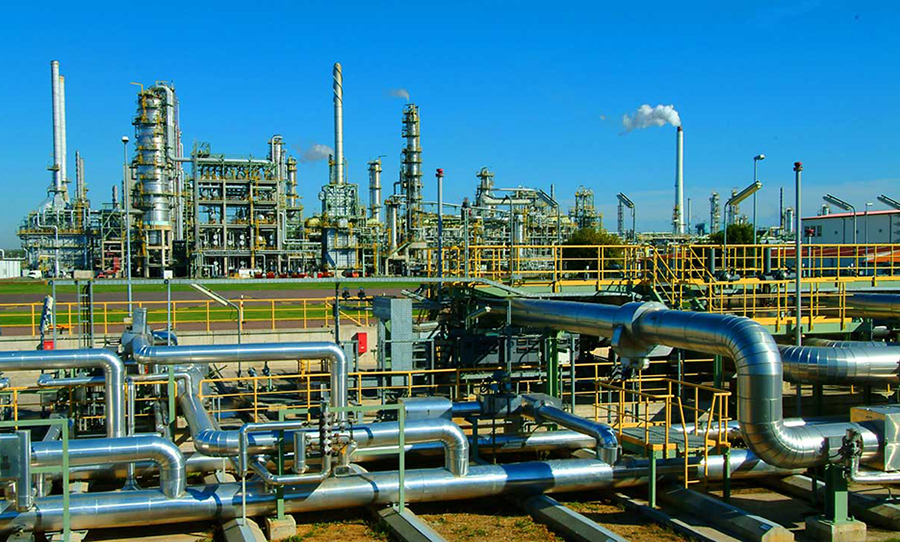
By Kestér Kenn Klomegâh
Over the past two decades, Russia’s economic influence in Africa—and specifically in Nigeria—has been limited, largely due to a lack of structured financial support from Russian policy banks and state-backed investment mechanisms. While Russian companies have demonstrated readiness to invest and compete with global players, they consistently cite insufficient government financial guarantees as a key constraint.
Unlike China, India, Japan, and the United States—which have provided billions in concessionary loans and credit lines to support African infrastructure, agriculture, manufacturing, and SMEs—Russia has struggled to translate diplomatic goodwill into substantial economic projects. For example, Nigeria’s trade with Russia accounts for barely 1% of total trade volume, while China and the U.S. dominate at over 15% and 10% respectively in the last decade. This disparity highlights the challenges Russia faces in converting agreements into actionable investment.
Lessons from Nigeria’s Past
The limited impact of Russian economic diplomacy echoes Nigeria’s own history of unfulfilled agreements during former President Olusegun Obasanjo’s administration. Over the past 20 years, ambitious energy, transport, and industrial initiatives signed with foreign partners—including Russia—often stalled or produced minimal results. In many cases, projects were approved in principle, but funding shortfalls, bureaucratic hurdles, and weak follow-through left them unimplemented. Nothing monumental emerged from these agreements, underscoring the importance of financial backing and sustained commitment.
China as a Model
Policy experts point to China’s systematic approach to African investments as a blueprint for Russia. Chinese state policy banks underwrite projects, de-risk investments, and provide finance often secured by African sovereign guarantees. This approach has enabled Chinese companies to execute large-scale infrastructure efficiently, expanding their presence across sectors while simultaneously investing in human capital.
Egyptian Professor Mohamed Chtatou at the International University of Rabat and Mohammed V University in Rabat, Morocco, argues: “Russia could replicate such mechanisms to ensure companies operate with financial backing and risk mitigation, rather than relying solely on bilateral agreements or political connections.”
Russia’s Current Footprint in Africa
Russia’s economic engagement in Africa is heavily tied to natural resources and military equipment. In Zimbabwe, platinum rights and diamond projects were exchanged for fuel or fighter jets. Nearly half of Russian arms exports to Africa are concentrated in countries like Nigeria, Zimbabwe, and Mozambique. Large-scale initiatives, such as the planned $10 billion nuclear plant in Zambia, have stalled due to a lack of Russian financial commitment, despite completed feasibility studies. Similar delays have affected nuclear projects in South Africa, Rwanda, and Egypt.
Federation Council Chairperson Valentina Matviyenko and Senator Igor Morozov have emphasized parliamentary diplomacy and the creation of new financial instruments, such as investment funds under the Russian Export Center, to provide structured support for businesses and enhance trade cooperation. These measures are designed to address historical gaps in financing and ensure that agreements lead to tangible outcomes.
Opportunities and Challenges
Analysts highlight a fundamental challenge: Russia’s limited incentives in Africa. While China invests to secure resources and export markets, Russia lacks comparable commercial drivers. Russian companies possess technological and industrial capabilities, but without sufficient financial support, large-scale projects remain aspirational rather than executable.
The historic Russia-Africa Summits in Sochi and in St. Petersburg explicitly indicate a renewed push to deepen engagement, particularly in the economic sectors. President Vladimir Putin has set a goal to raise Russia-Africa trade from $20 billion to $40 billion over the next few years. However, compared to Asian, European, and American investors, Russia still lags significantly. UNCTAD data shows that the top investors in Africa are the Netherlands, France, the UK, the United States, and China—countries that combine capital support with strategic deployment.
In Nigeria, agreements with Russian firms over energy and industrial projects have yielded little measurable progress. Over 20 years, major deals signed during Obasanjo’s administration and renewed under subsequent governments often stalled at the financing stage. The lesson is clear: political agreements alone are insufficient without structured investment and follow-through.
Strategic Recommendations
For Russia to expand its economic influence in Africa, analysts recommend:
- Structured financial support: Establishing state-backed credit lines, policy bank guarantees, and investment funds to reduce project risks.
- Incentive realignment: Identifying sectors where Russian expertise aligns with African needs, including energy, industrial technology, and infrastructure.
- Sustained implementation: Turning signed agreements into tangible projects with clear timelines and milestones, avoiding the pitfalls of unfulfilled past agreements.
With proper financial backing, Russia can leverage its technological capabilities to diversify beyond arms sales and resource-linked deals, enhancing trade, industrial, and technological cooperation across Africa.
Conclusion
Russia’s Africa strategy remains a work in progress. Nigeria’s experience with decades of agreements that failed to materialize underscores the importance of structured financial commitments and persistent follow-through. Without these, Russia risks remaining a peripheral player (virtual investor) while Arab States such as UAE, China, the United States, and other global powers consolidate their presence.
The potential is evident: Africa is a fast-growing market with vast natural resources, infrastructure needs, and a young, ambitious population. Russia’s challenge—and opportunity—is to match diplomatic efforts with financial strategy, turning political ties into lasting economic influence.
World
Afreximbank Warns African Governments On Deep Split in Global Commodities
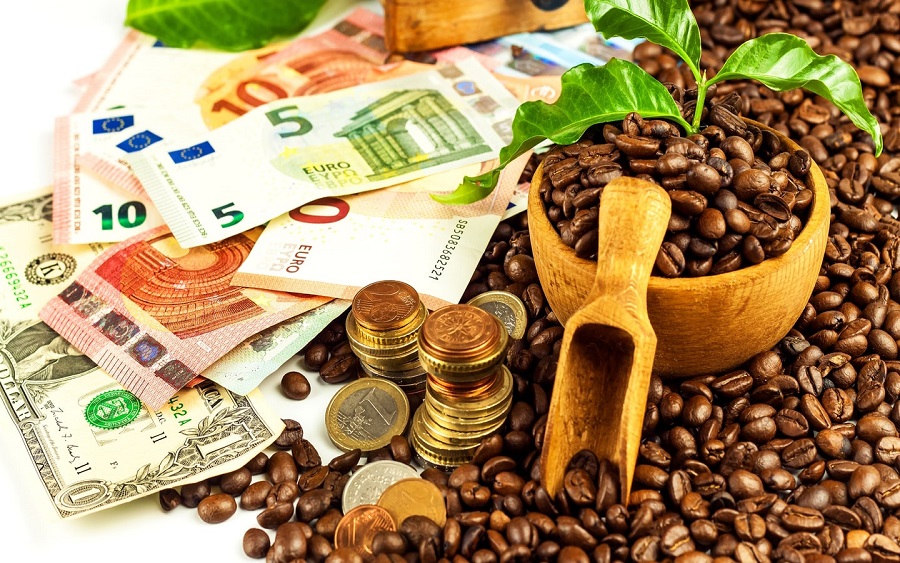
By Adedapo Adesanya
Africa Export-Import Bank (Afreximbank) has urged African governments to lean into structural tailwinds, warning that the global commodity landscape has entered a new phase of deepening split.
In its November 2025 commodity bulletin, the bank noted that markets are no longer moving in unison; instead, some are powered by structural demand while others are weakening under oversupply, shifting consumption patterns and weather-related dynamics.
As a result of this bifurcation, the Cairo-based lender tasked policymakers on the continent to manage supply-chain vulnerabilities and diversify beyond the commodity-export model.
The report highlights that commodities linked to energy transition, infrastructure development and geopolitical realignments are gaining momentum.
For instance, natural gas has risen sharply from 2024 levels, supported by colder-season heating needs, export disruptions around the Red Sea and tightening global supply. Lithium continues to surge on strong demand from electric-vehicle and battery-storage sectors, with growth projections of up to 45 per cent in 2026. Aluminium is approaching multi-year highs amid strong construction and automotive activity and smelter-level power constraints, while soybeans are benefiting from sustained Chinese purchases and adverse weather concerns in South America.
Even crude oil, which accounts for Nigeria’s highest foreign exchange earnings, though still lower year-on-year, is stabilising around $60 per barrel as geopolitical supply risks, including drone attacks on Russian facilities, offset muted global demand.
In contrast, several commodities that recently experienced strong rallies are now softening.
The bank noted that cocoa prices are retreating from record highs as West African crop prospects improve and inventories recover. Palm oil markets face oversupply in Southeast Asia and subdued demand from India and China, pushing stocks to multi-year highs. Sugar is weakening under expectations of a nearly two-million-tonne global surplus for the 2025/26 season, while platinum and silver are seeing headwinds from weaker industrial demand, investor profit-taking and hawkish monetary signals.
For Africa, the bank stresses that the implications are clear. Countries aligned with energy-transition metals and infrastructure-linked commodities stand to benefit from more resilient long-term demand.
It urged those heavily exposed to softening agricultural markets to accelerate a shift into processing, value addition and product diversification.
The bulletin also called for stronger market-intelligence systems, improved intra-African trade connectivity, and investment in logistics and regulatory capacity, noting that Africa’s competitiveness will depend on how quickly governments adapt to the new two-speed global environment.
World
Aduna, Comviva to Accelerate Network APIs Monetization

By Modupe Gbadeyanka
A strategic partnership designed to accelerate worldwide enterprise adoption and monetisation of Network APIs has been entered into between Comviva and the global aggregator of standardised network APIs, Aduna.
The adoption would be done through Comviva’s flagship SaaS-based platform for programmable communications and network intelligence, NGAGE.ai.
The partnership combines Comviva’s NGAGE.ai platform and enterprise onboarding expertise with Aduna’s global operator consortium.
This unified approach provides enterprises with secure, scalable access to network intelligence while enabling telcos to monetise network capabilities efficiently.
The collaboration is further strengthened by Comviva’s proven leadership in the global digital payments and digital lending ecosystem— sectors that will be among the biggest adopters of Network APIs.
The NGAGE.ai platform is already active across 40+ countries, integrated with 100+ operators, and processing over 250 billion transactions annually for more than 7,000 enterprise customers. With its extensive global deployment, NGAGE.ai is positioned as one of the most scalable and trusted platforms for API-led network intelligence adoption.
“As enterprises accelerate their shift toward real-time, intelligence-driven operations, Network APIs will become foundational to digital transformation. With NGAGE.ai and Aduna’s global ecosystem, we are creating a unified and scalable pathway for enterprises to adopt programmable communications at speed and at scale.
“This partnership strengthens our commitment to helping telcos monetise network intelligence while enabling enterprises to build differentiated, secure, and future-ready digital experiences,” the chief executive of Comviva, Mr Rajesh Chandiramani, stated.
Also, the chief executive of Aduna, Mr Anthony Bartolo, noted that, “The next wave of enterprise innovation will be powered by seamless access to network intelligence.
“By integrating Comviva’s NGAGE.ai platform with Aduna’s global federation of operators, we are enabling enterprises to innovate consistently across markets with standardised, high-performance Network APIs.
“This collaboration enhances the value chain for operators and gives enterprises the confidence and agility needed to launch new services, reduce fraud, and deliver more trustworthy customer experiences worldwide.”
-

 Feature/OPED6 years ago
Feature/OPED6 years agoDavos was Different this year
-
Travel/Tourism9 years ago
Lagos Seals Western Lodge Hotel In Ikorodu
-

 Showbiz3 years ago
Showbiz3 years agoEstranged Lover Releases Videos of Empress Njamah Bathing
-

 Banking7 years ago
Banking7 years agoSort Codes of GTBank Branches in Nigeria
-

 Economy2 years ago
Economy2 years agoSubsidy Removal: CNG at N130 Per Litre Cheaper Than Petrol—IPMAN
-

 Banking3 years ago
Banking3 years agoFirst Bank Announces Planned Downtime
-

 Banking3 years ago
Banking3 years agoSort Codes of UBA Branches in Nigeria
-

 Sports3 years ago
Sports3 years agoHighest Paid Nigerian Footballer – How Much Do Nigerian Footballers Earn



